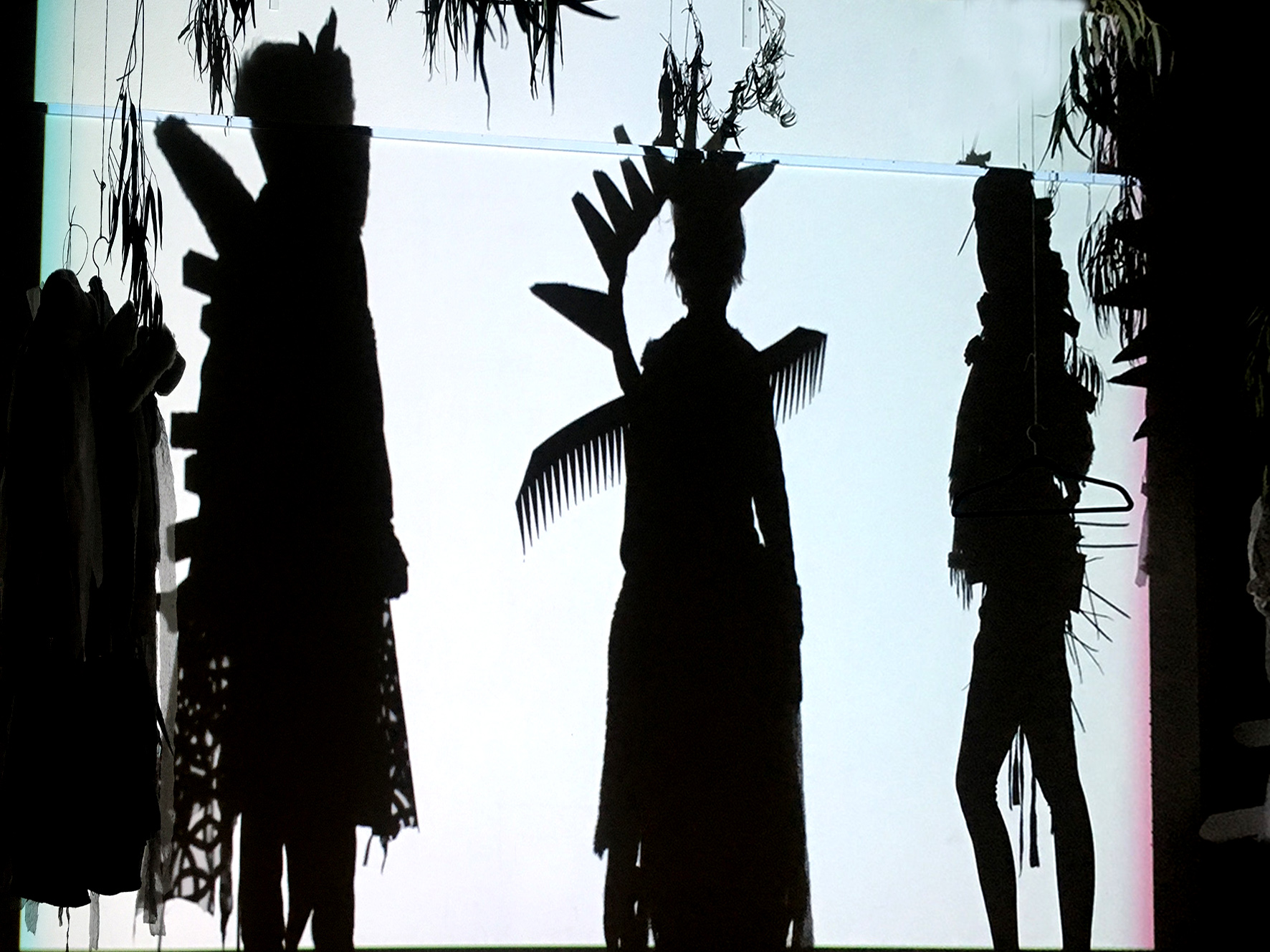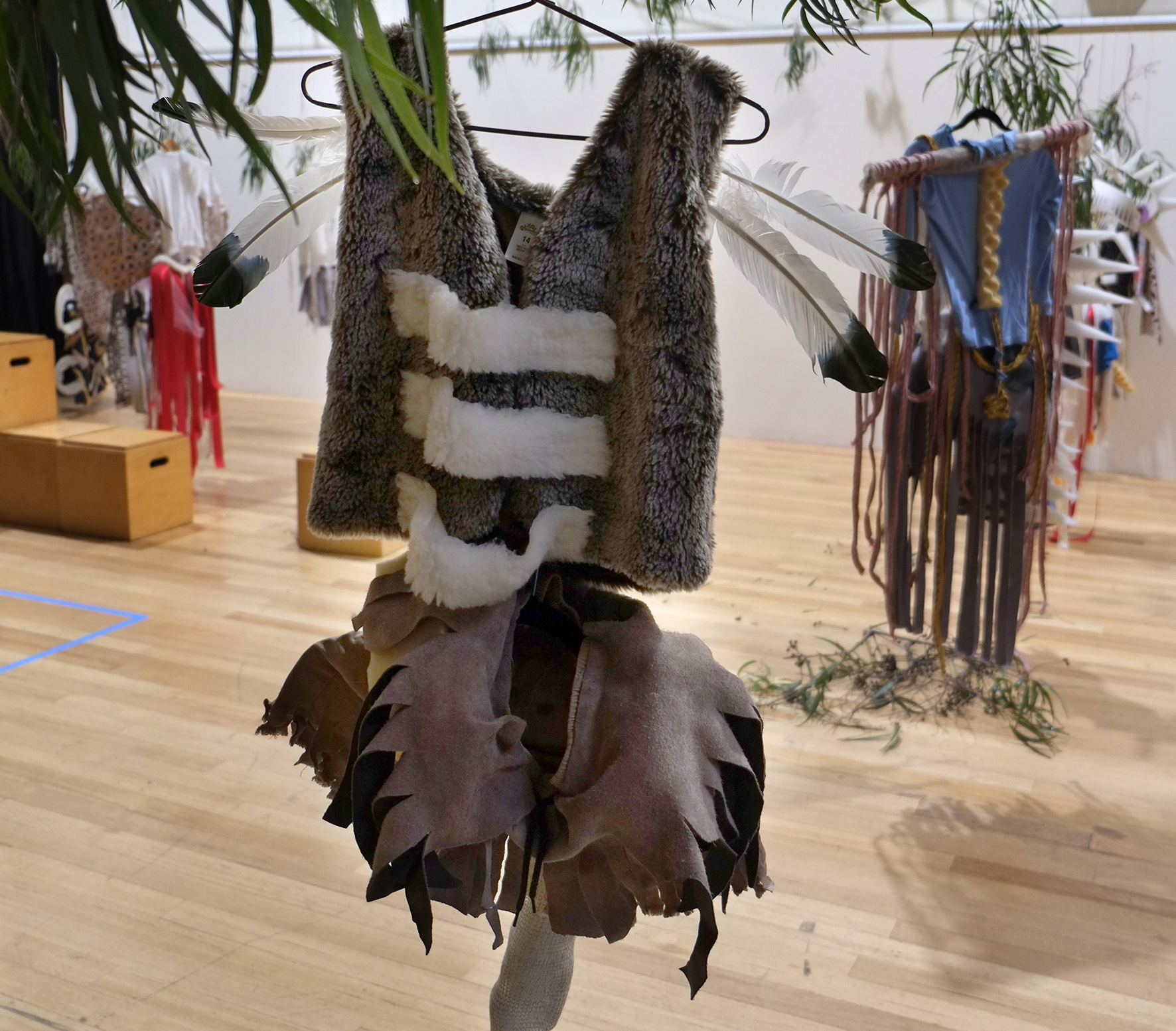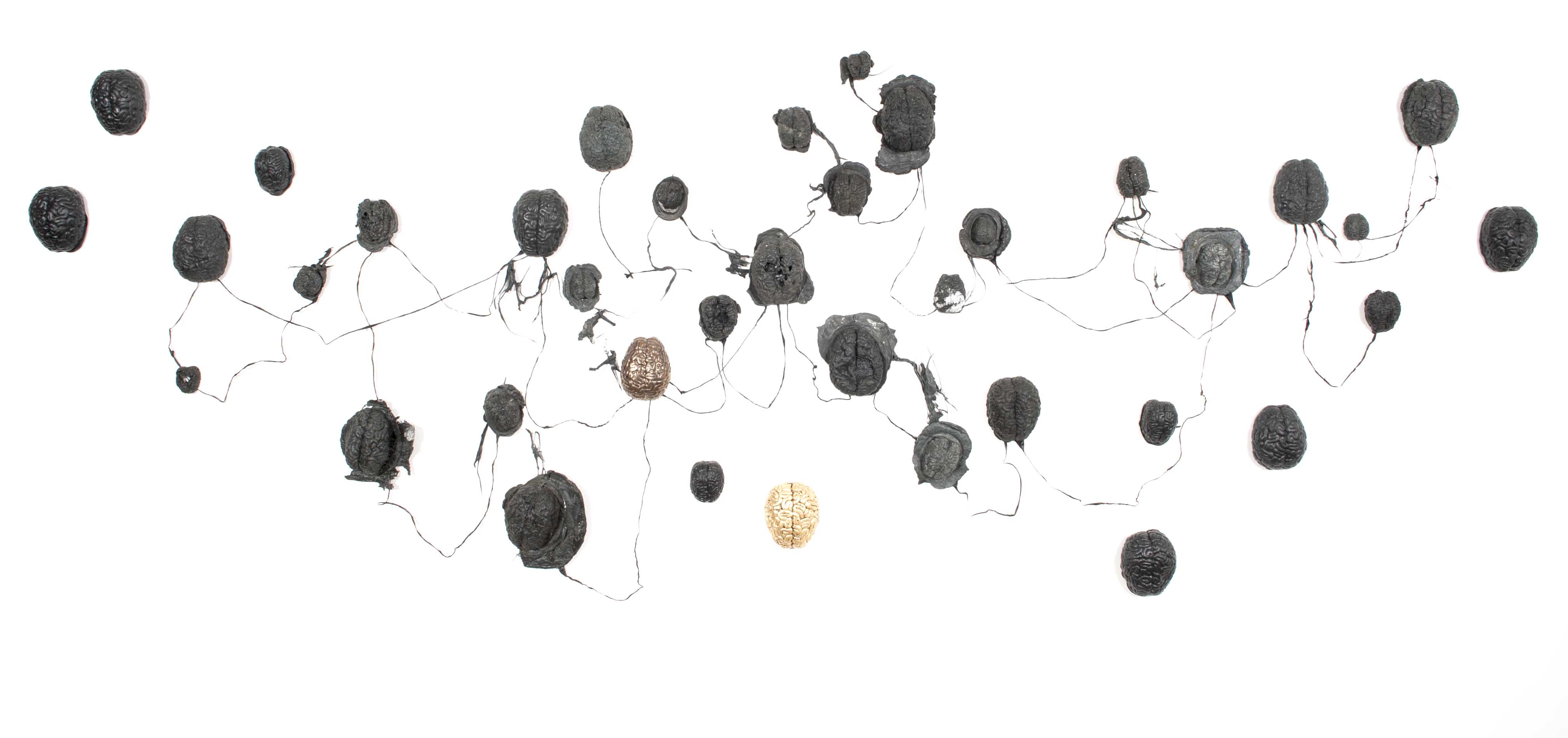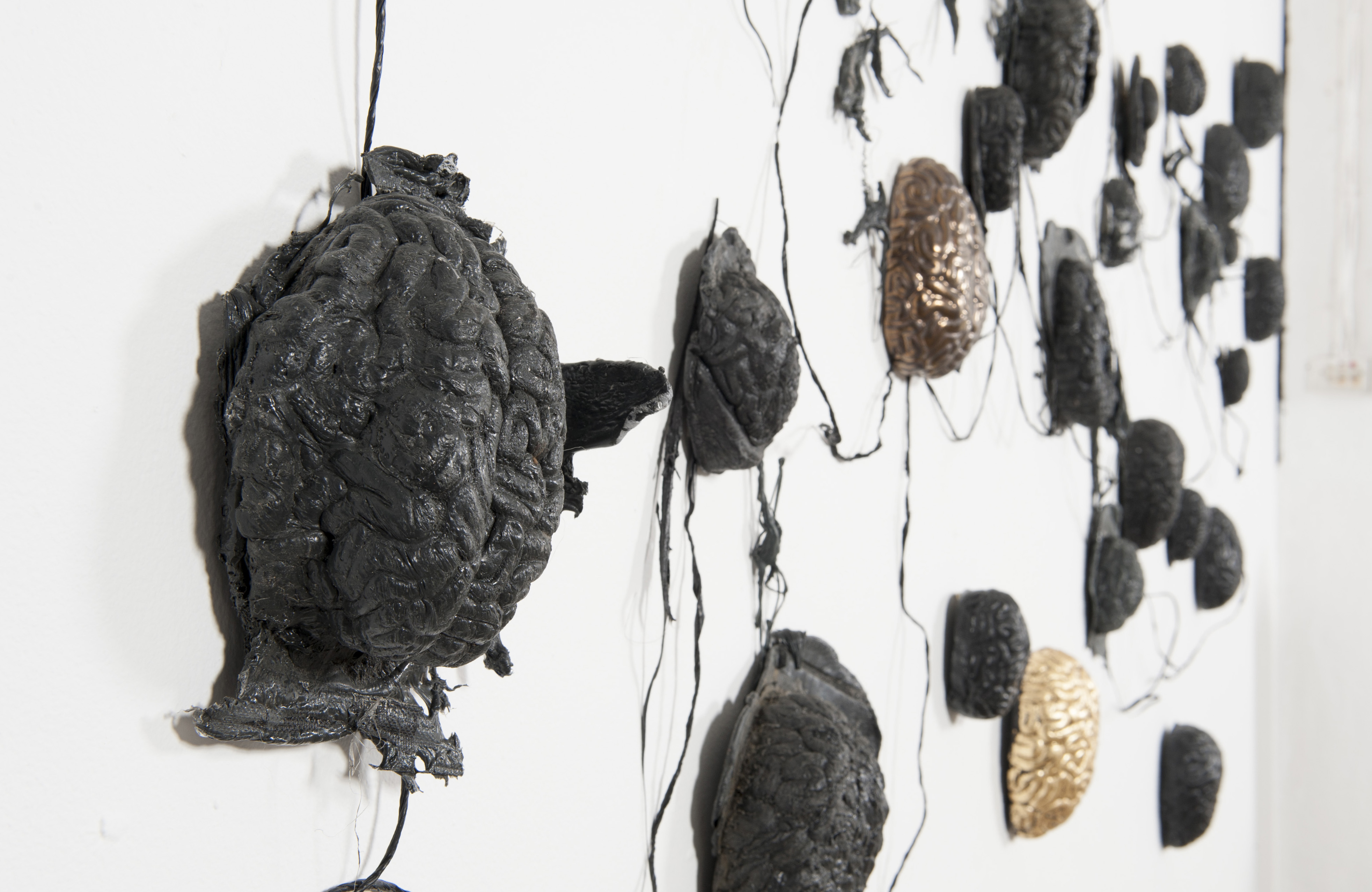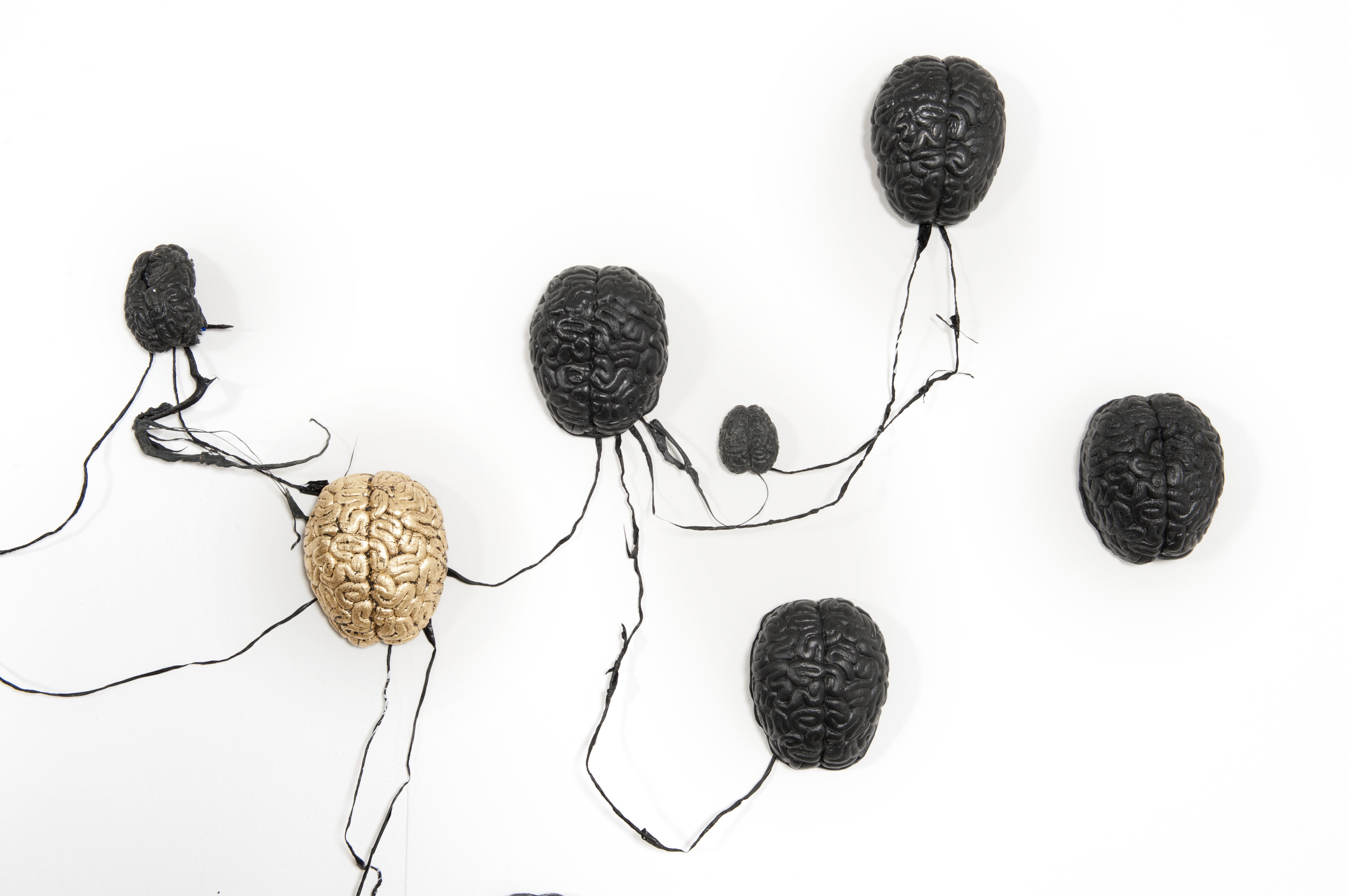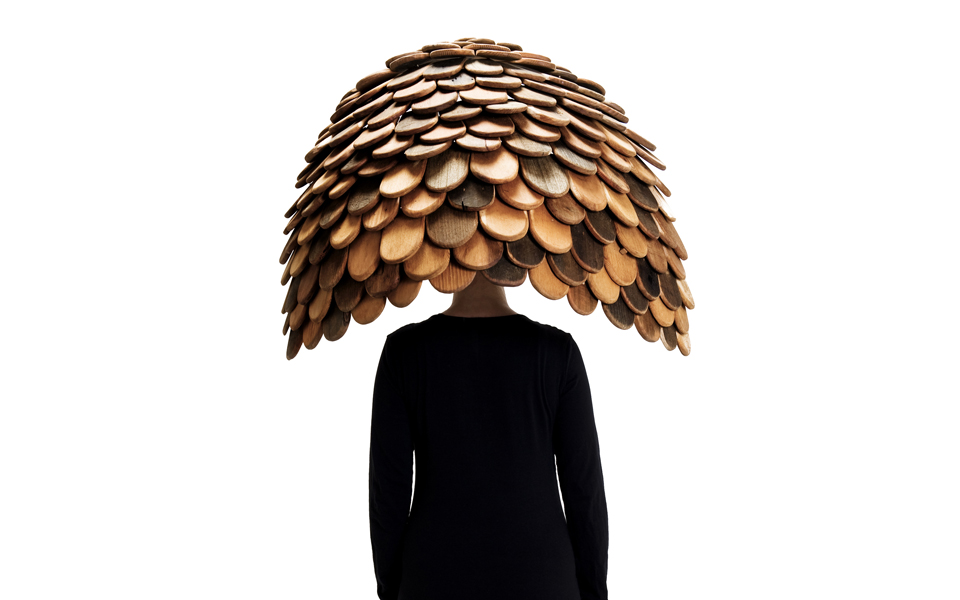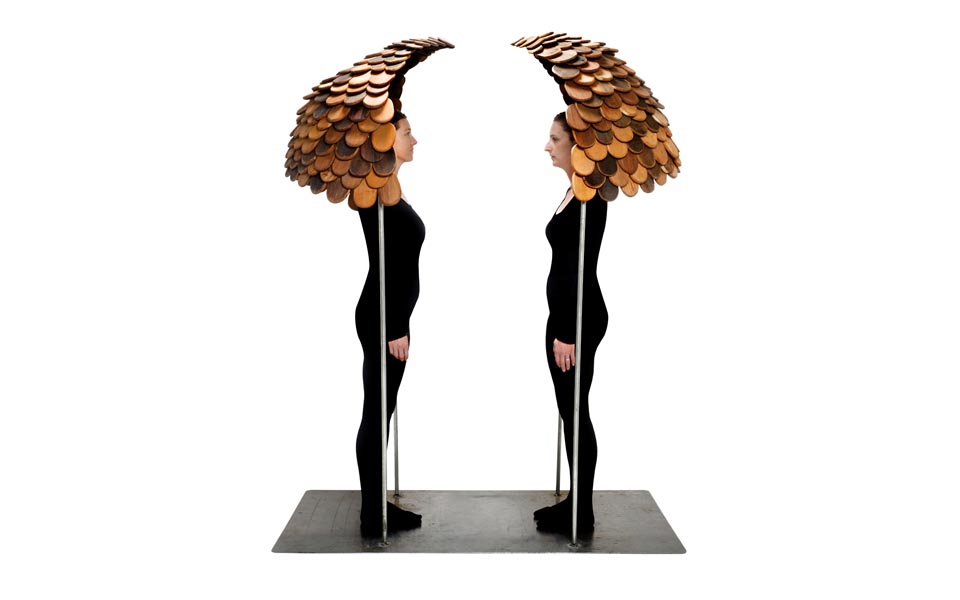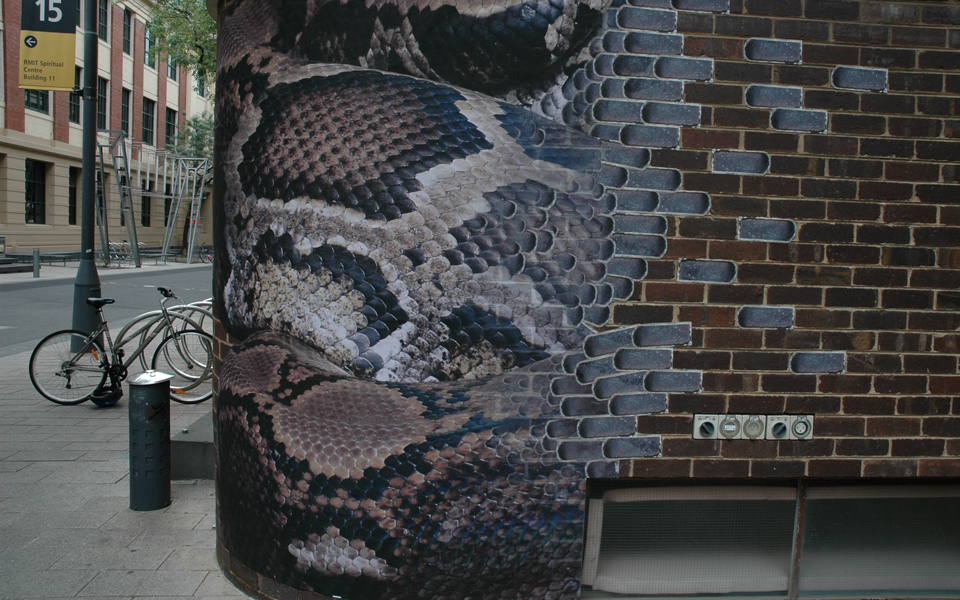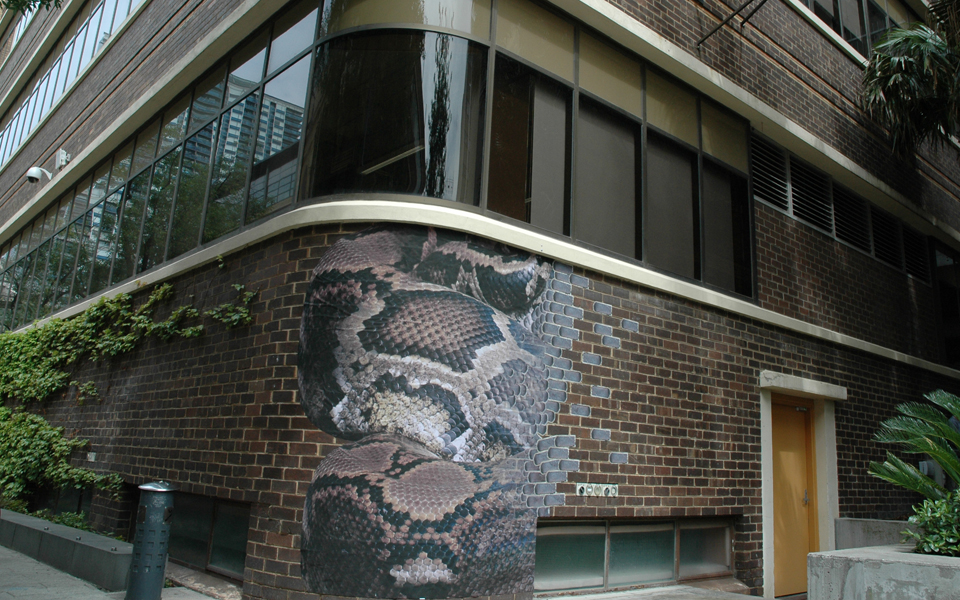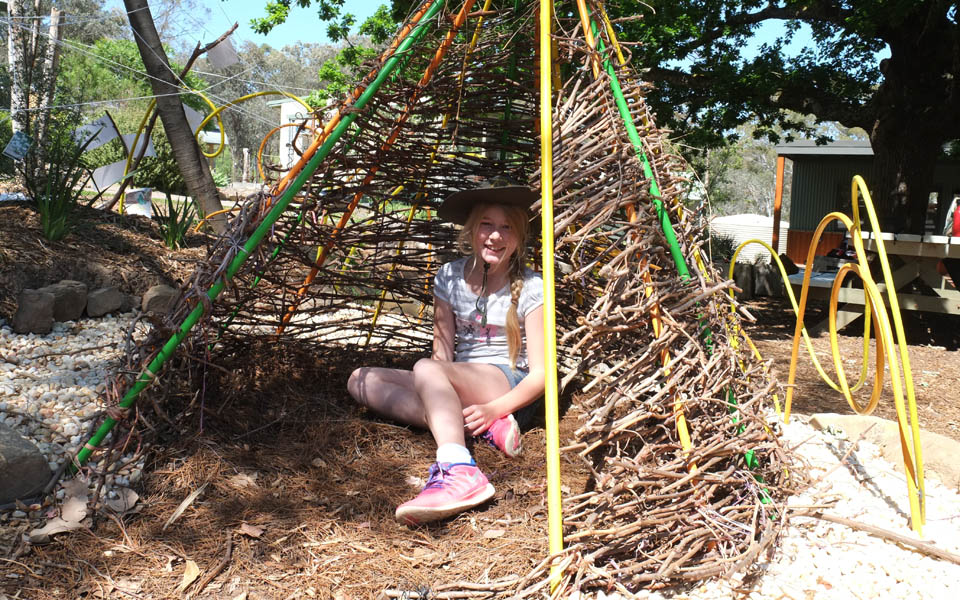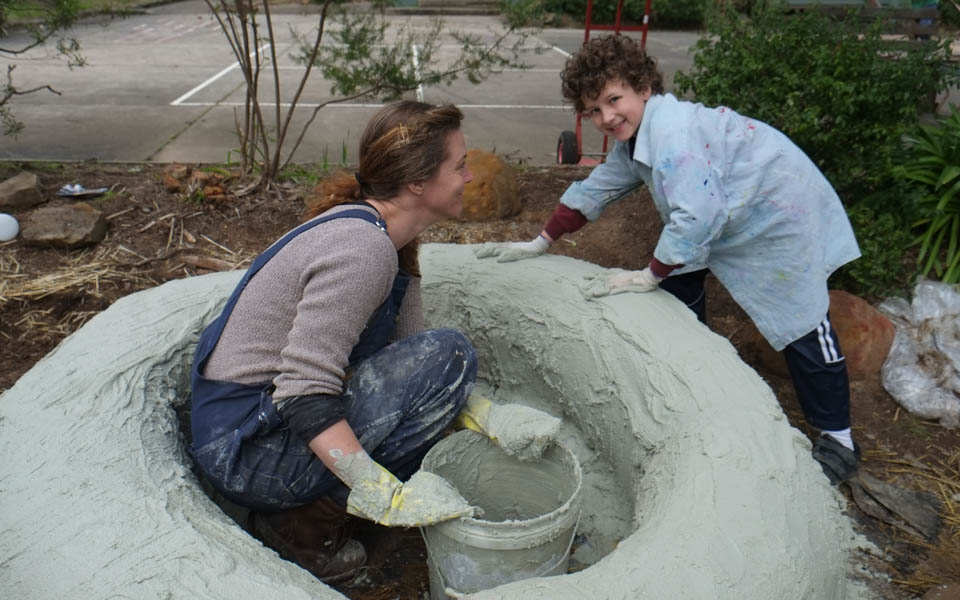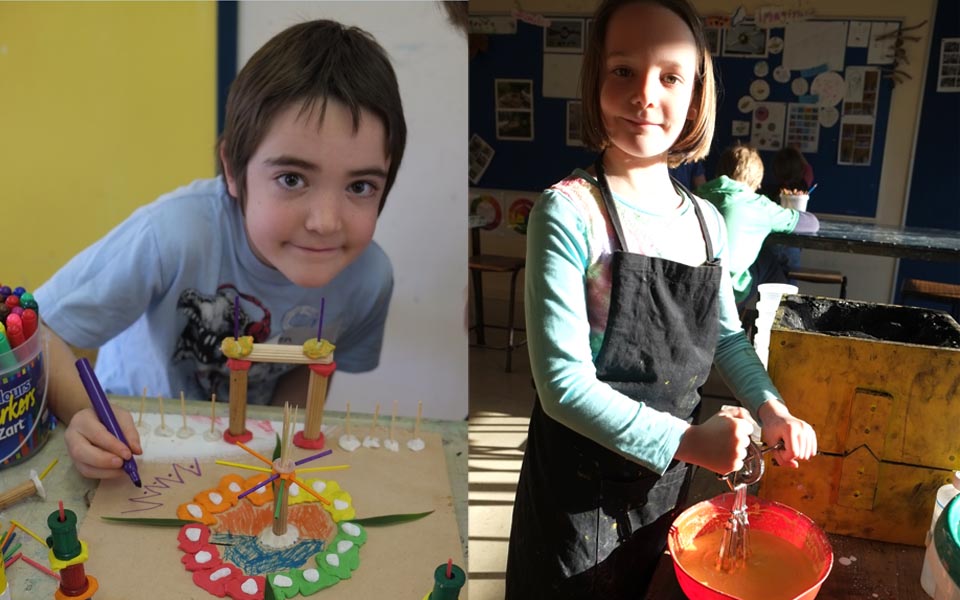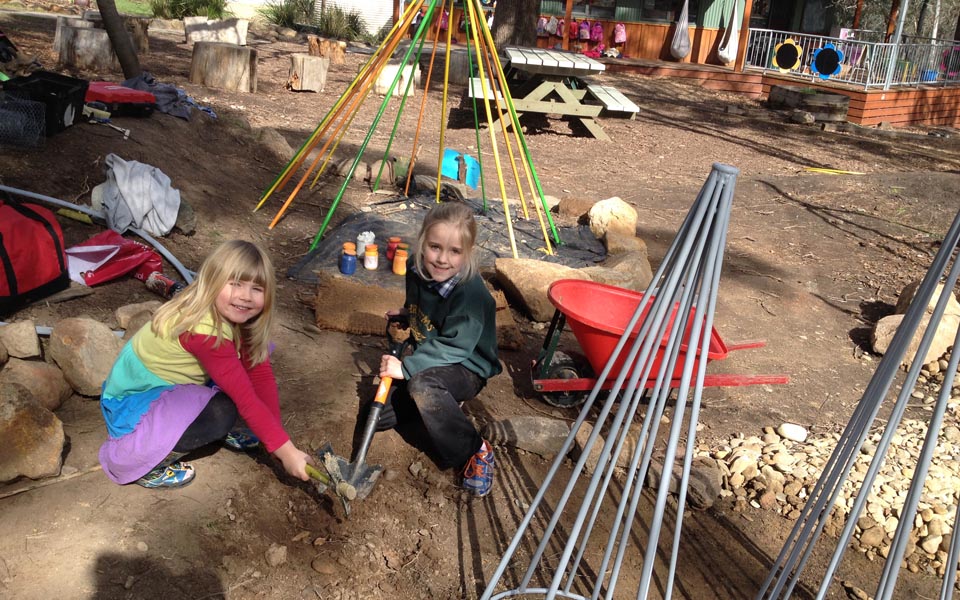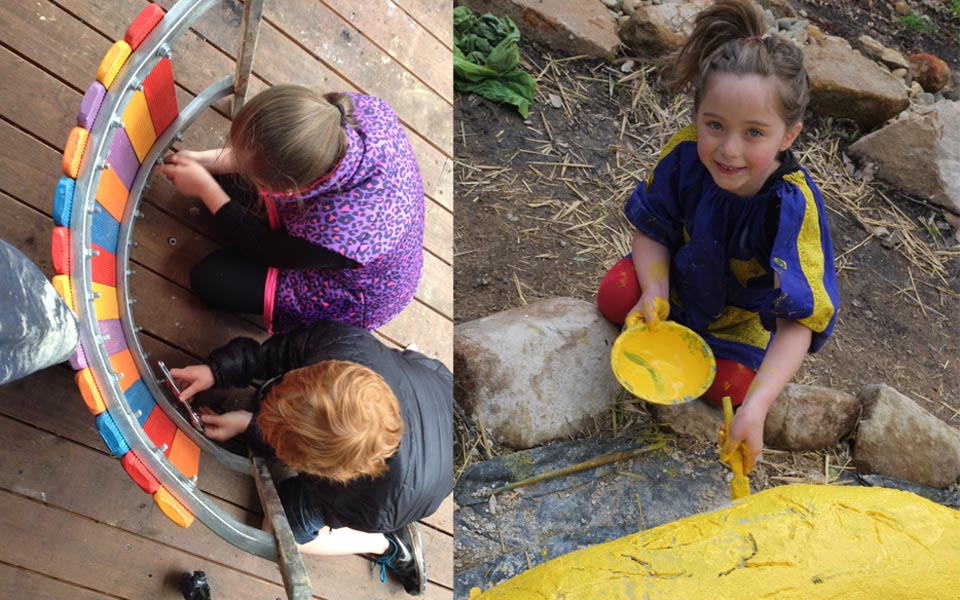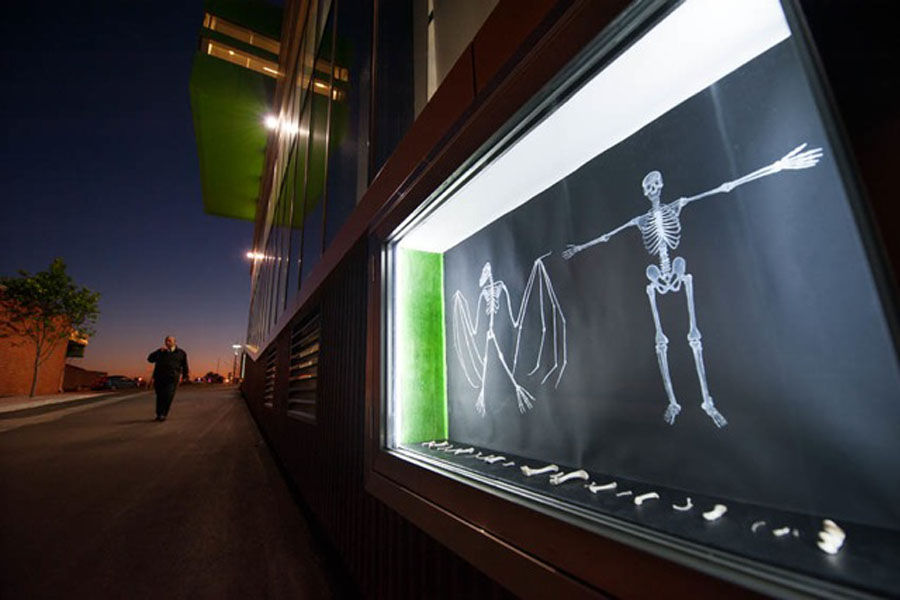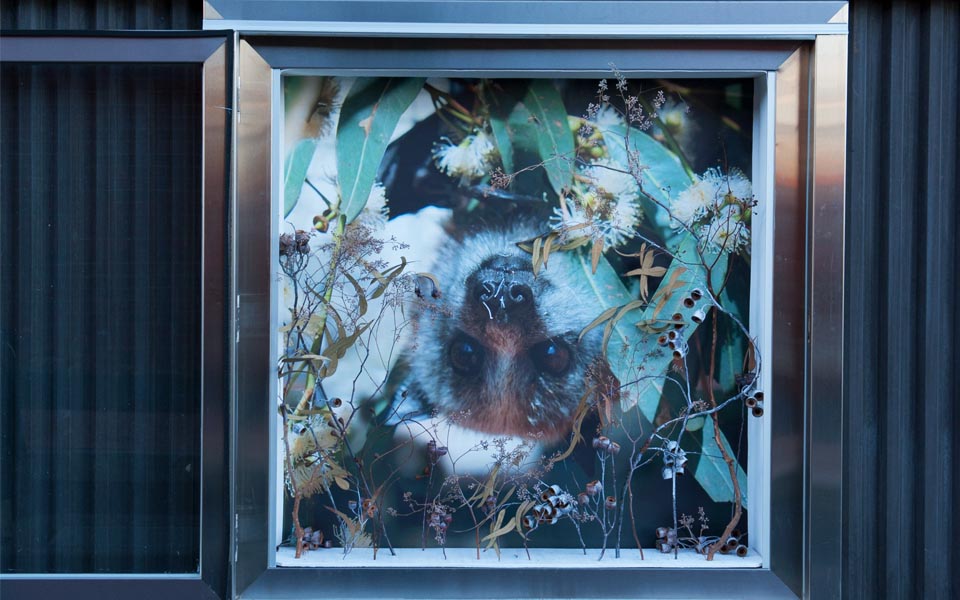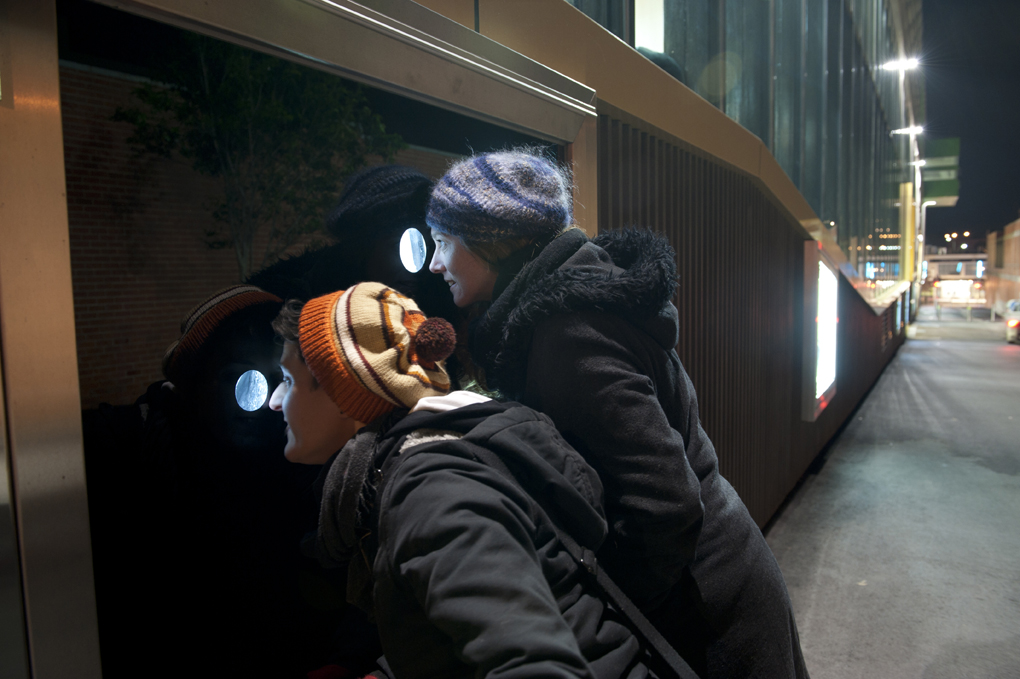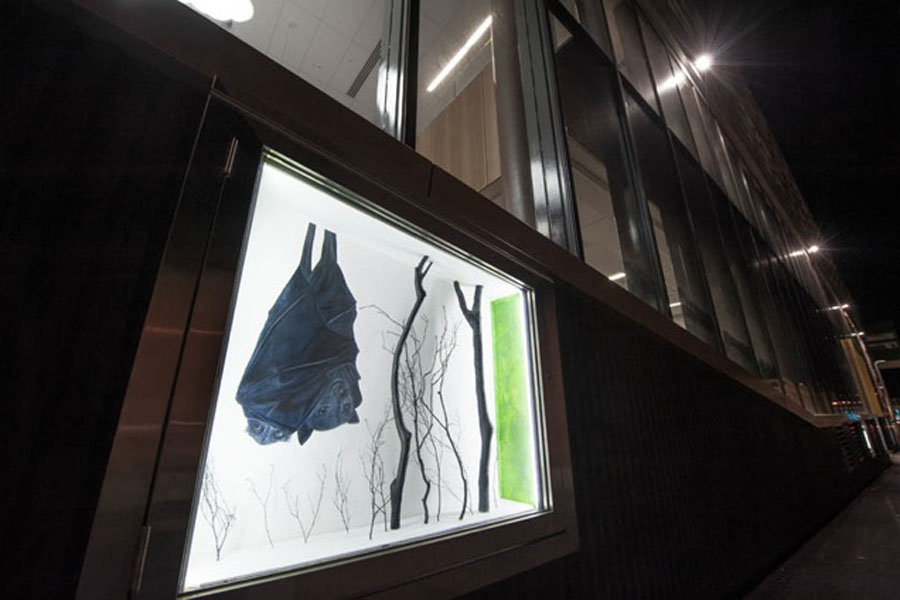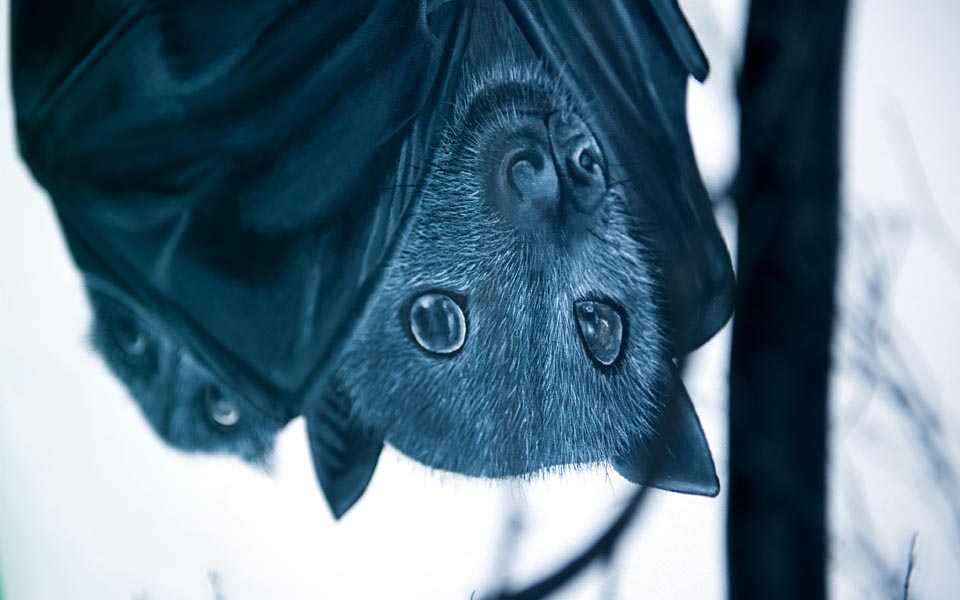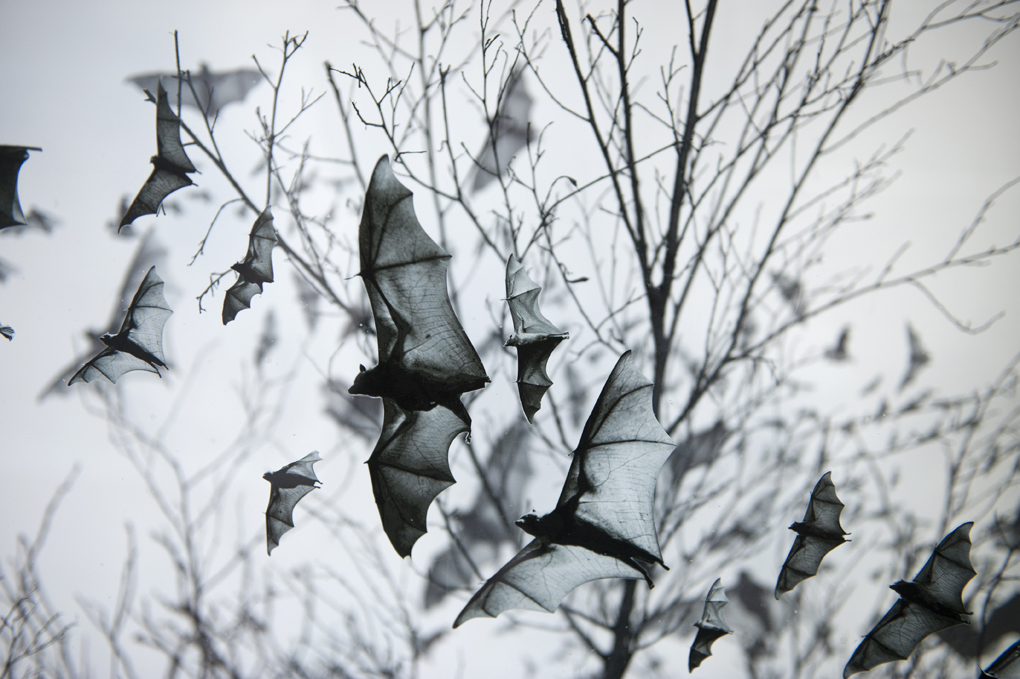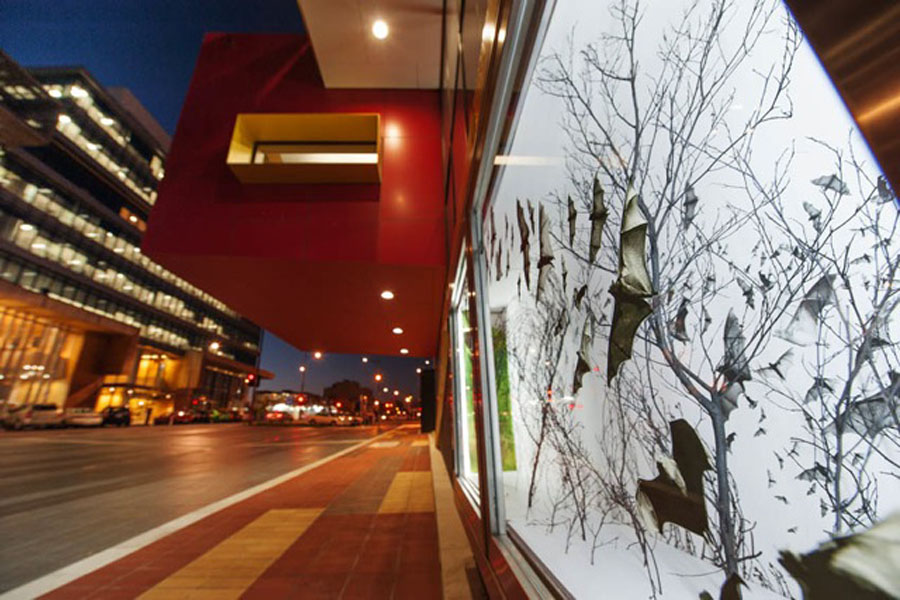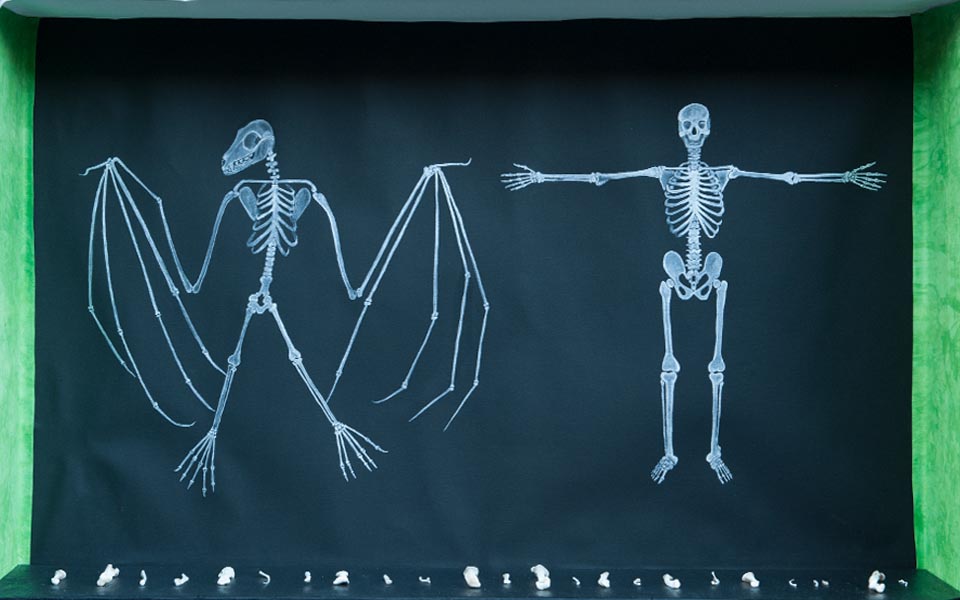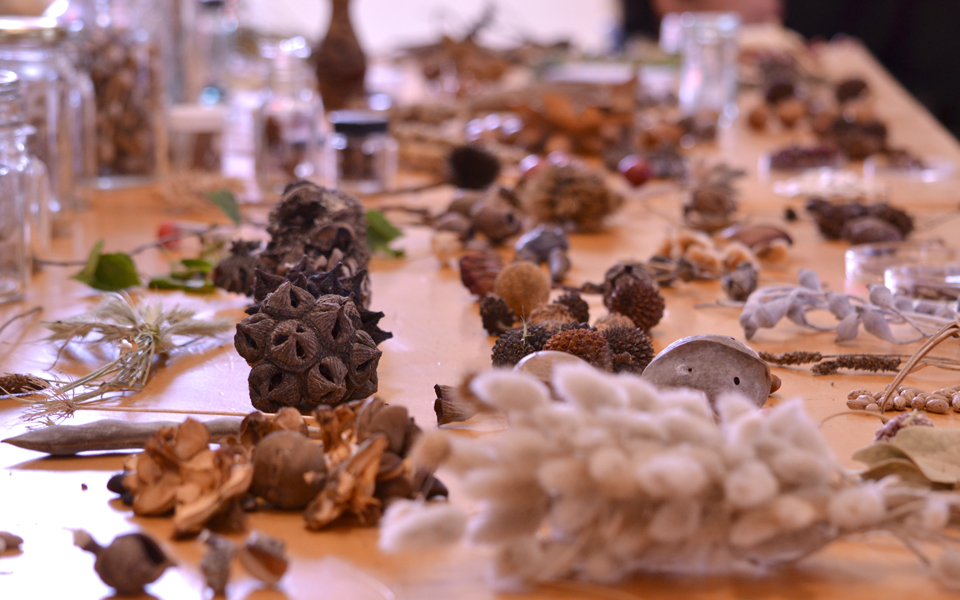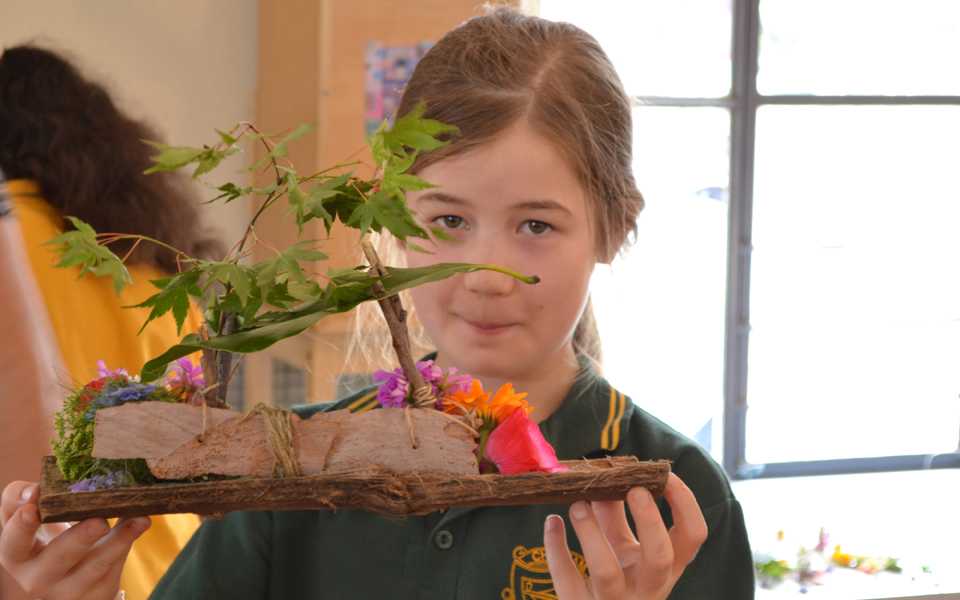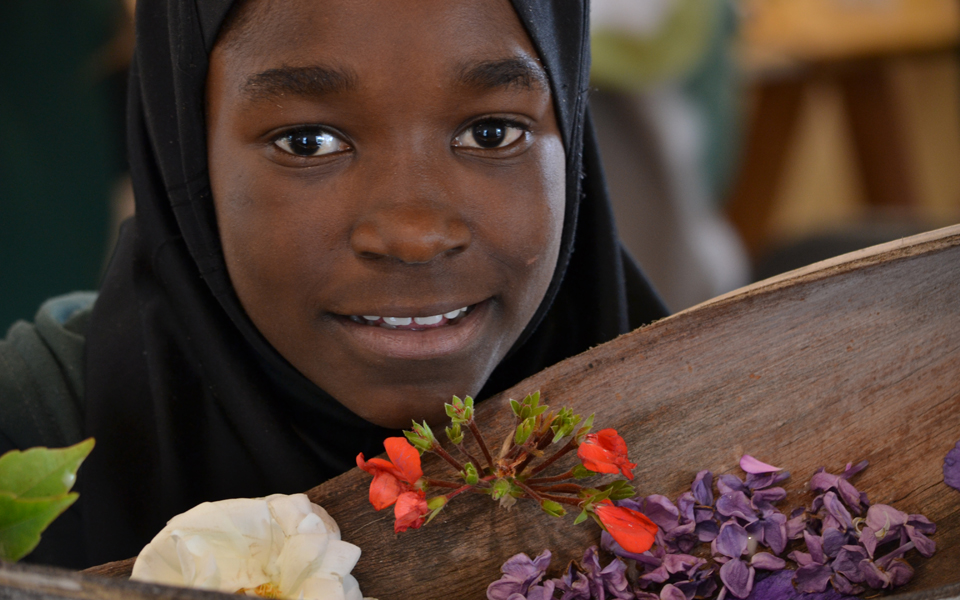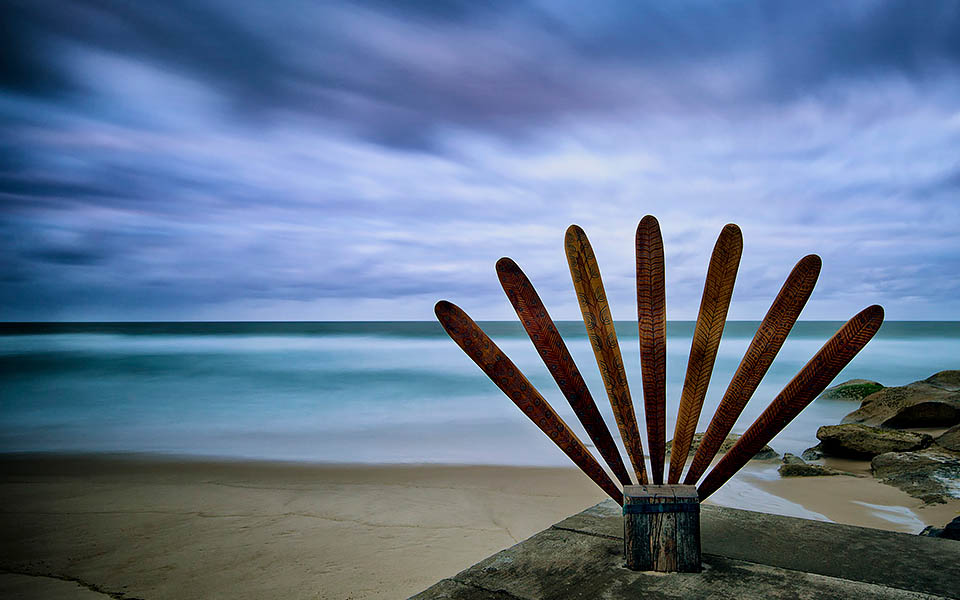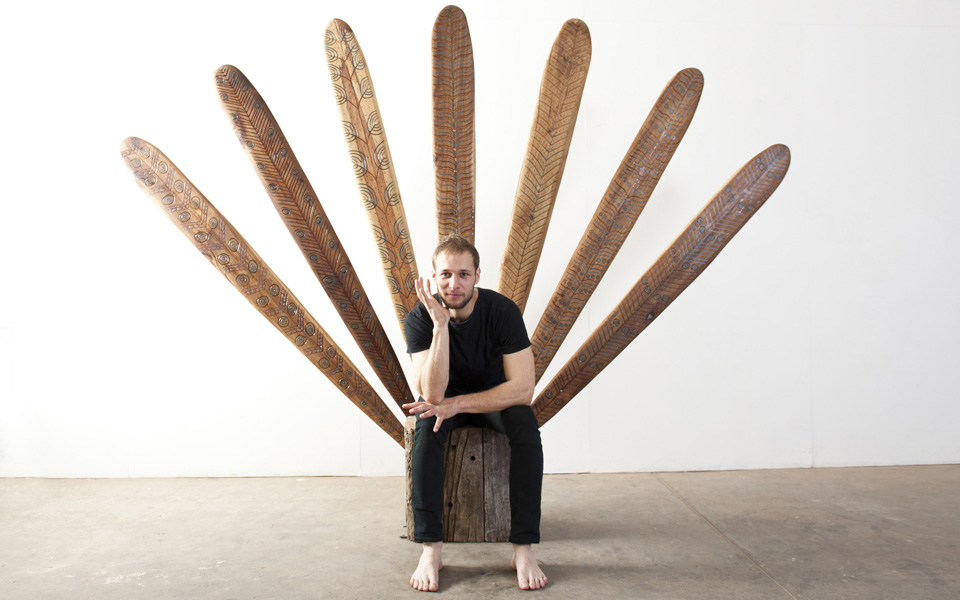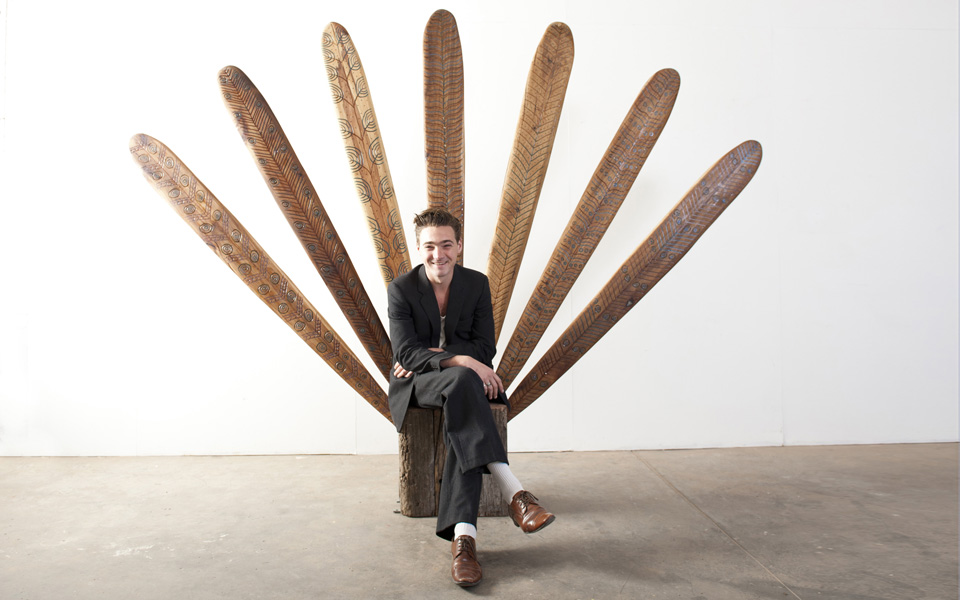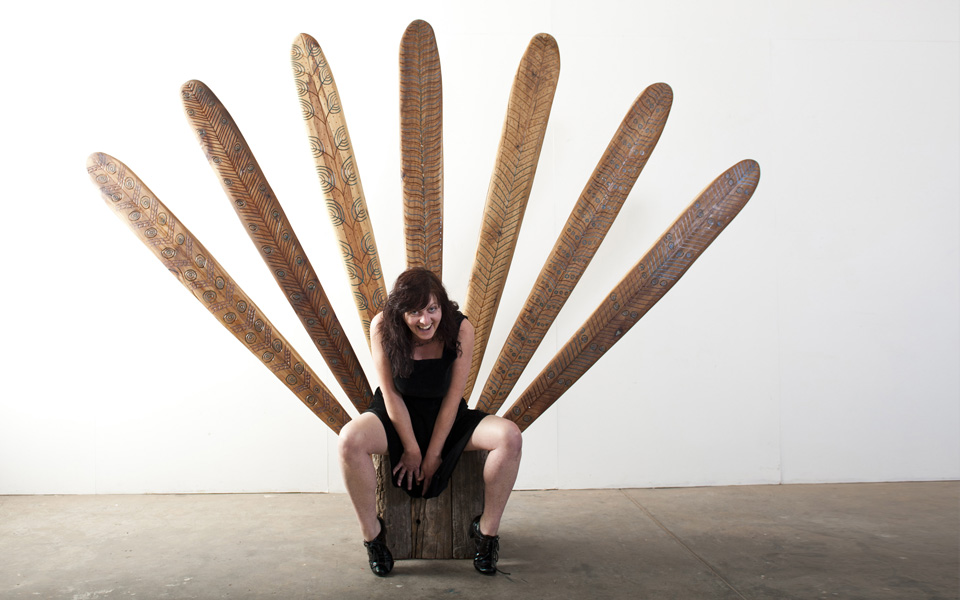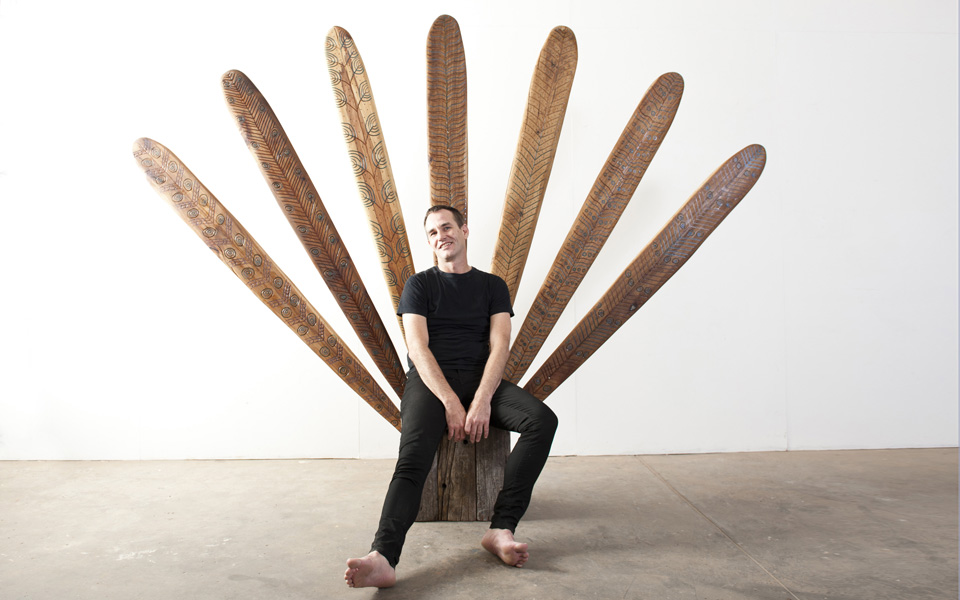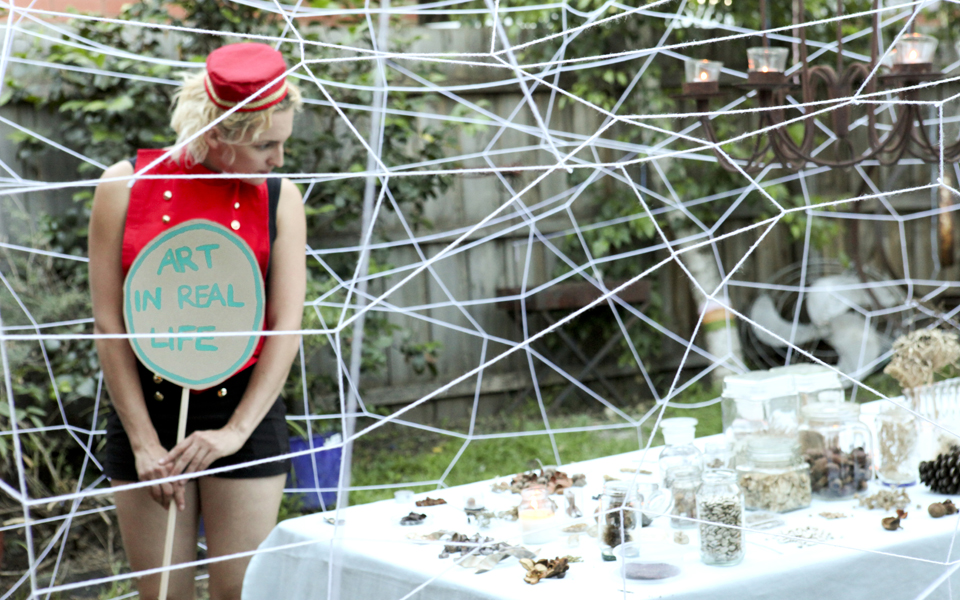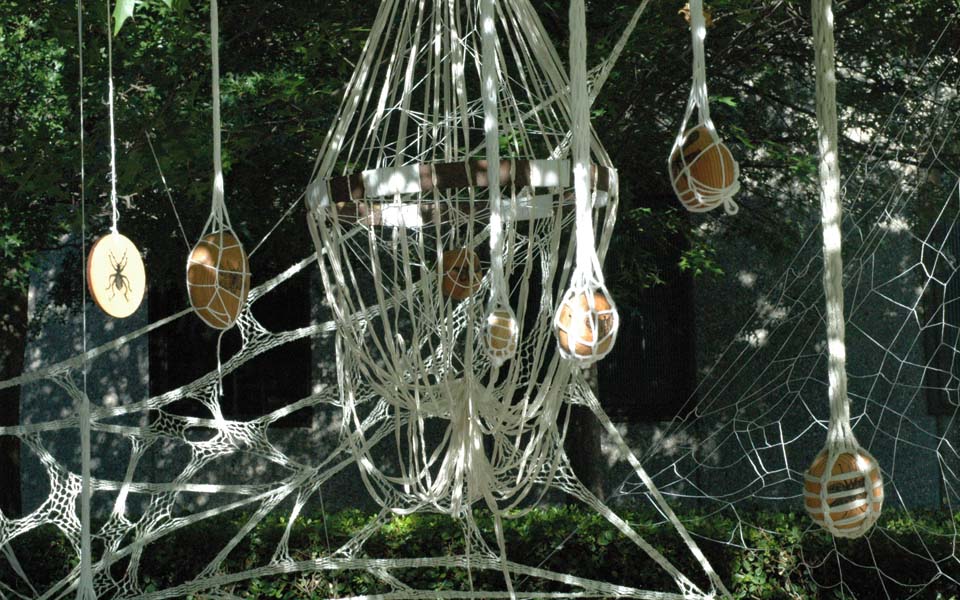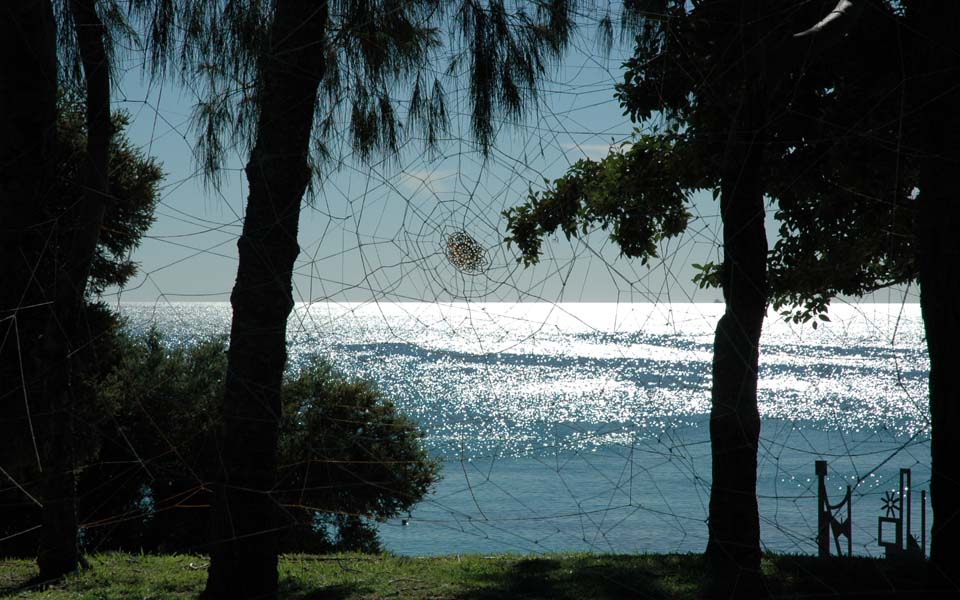Bendigo Conservatory
- Bendigo Conservatory / 2019 / Re-Imagining Bendigo Creek Installation
RE-IMAGINING BENDIGO CREEK
There is a project underway to improve the ecology of Bendigo Creek by increasing animal habitat, improving water quality and creating a riparian environment that the community can appreciate and enjoy. The plans to rejuvenate the creek have included the consultation of the local Dja Dja Wurrung community.
The values that the Dja Dja Warrung people hold for their Country are shaped from their belief systems that all things have marrup (spirit) – water, birds, plants, animals, rocks and mountains. Dja Dja Warrung people see all the land and it’s creatures in a holistic way, interconnected with each other and with the people. The rivers are the veins of the Country, they had a name and song and were celebrated as part of Country and Culture. Waterways provided food and medicine, and places to camp, hunt, fish and hold ceremonies. European colonisation has left the legacy of a degraded waterway, the ‘Reimagining Bendigo Creek’ project is an opportunity to restore Bendigo Creek as a vital and cherished place for the whole community in consultation with the Dja Dja Warrung and their knowledge of Country.
This installation uses knowledge sharing through creative and playful activities to help inform, inspire and connect communities to the Bendigo Creek rehabilitation project.The beautiful glass Conservatory in Bendigo’s Rosalind Park was transformed into an artful world with giant pop up books full of fauna sourced from early naturalist imagery, the endemic Whirrakee Wattle was marked with a collaborative Pom Pom Tree that grew over the timespan of the exhibition as people contributed to it. There was a giant sugar glider nest, a specimen table, a sound work and lots of great hands on activities.
Shapeshifters
- 2018 / Melbourne Knowledge Week / Tech Lab Collaboration / ArtPlay
Shapeshifters was a collaboration with audio visual artist Georgie Pinn Electric Puppet, Daniel Calvo Mosster Studio, and dancer Fiona Cameron. Using technology we explored ideas around myths and hybrid creatures to create an immersive experience. I worked on body altering costumes made from rescued industrial materials and second hand clothing to evoke animal embodiment. Children were invited to move and dance through the techno-natural environment of interactive floor projections and sprite-emanating silhouettes in what I thought became a contemporary pagan ritual that celebrated connections to nature and animal kin.
The Nature of Material
During my research into the use of recycled soft plastics as sculptural material, a series of test moulds were made. These small brains have a variety of interesting flaws, these pieces have been placed together in an installation connected by a network of neurons.
Becoming Animal
The transformation of aesthetic patterns found in the natural world alludes to a bird, a fish, a set of wings – the animal. The symbol reflects on the ancient and contemporary relationship between man and animal. It is a space to contemplate the idea of ‘becoming’, where anthropocentrism yields to sentient beings.
Camouflage
This site specific work subtly places the animal within an urban setting. Utilising an alteration in scale, the skin of the snake becomes an object of beauty. Through camouflage the snake becomes part of the human built environment.
Artist in Schools program
The Artist in Schools Program at Christmas Hills Primary School was joyful, creative and extremely rewarding experience and most importantly the children took complete ownership of the ‘Imaginarium project’ and were actively engaged in the entire process from concept to completion.
I took the position of facilitator, artistic director and project manager in this collaborative project. My priorities were to honour the creativity of the children while creating a permanent and interactive sculptural work. The delightful students of Christmas Hills Primary School developed ideas, concepts, and planning through a series of workshops including site specific earth art, casting, model making, landscape planning, clay sculpture, construction and drawing. They developed a concept of what the Imaginarium could be through discussion and visual inspiration, and contributed their ideas through sculptural form and drawing. The final sculptural works included a nest, a teepee, a bridge, a wind chime and a village, all set within a landscaped garden of various textures including boulders, stones, pebbles, sandpit, mulch and plants. The children helped in the construction and installation of the final works. They measured, mixed, painted, landscaped, cast, carved, wove, tightened nuts and bolts, planted and landscaped with energy and enthusiasm and watched their ideas come to life. An amazing bunch of parents were the heros that helped with the hard work to complete the project.
It really was a special project to be a part of, with an outcome that I believe we are all proud of. This permanent outdoor work is interactive, it is part garden, part playground and part sculpture and an enduring imaginative space for the children of Christmas Hills Primary.
Nocturnal pilgrimage
My research into fruit bats was presented as a public exhibition within seven large vitrines built in to the new Dandenong Municple Building. The installations consisted of painting, sculpture and photography for the inaugural Light-box Commission.
Seeds of Ideas – ArtPlay
The Seeds of Ideas project introduced 80 urban children many of which live in high rise flats around Melbourne, to the world of seeds. The project looked at the life cycle of seeds as both inspiration for art making, and conceptual thought. A series of exploratory art workshops and activities were held at Artplay and locations near the Yarra River.
The design and structure of seeds was explored with the help of conservationist Kirsty Skilbeck, to gain an understanding of the way that seeds catch the wind or travel to find their new home. After viewing the nature table the children made their own flying seeds out of paper and tested the design and flying ability of their seed sculptures by casting them off the Artplay mezzanine.
The notion of seeds as a metaphor was introduced where seeds are the beginning of things, things that grow, like an idea. The children wrote and drew a ‘Seed of an Idea’ that they would like to send off into the world. Little boats were made from natural materials that held these ideas onboard, in search of a place to grow. They were then placed in the water and floated away on an unknown adventure, travelling down the Yarra River for somebody to find, like a message in a bottle. Setting the boats free became a ceremony that took place on the Yarra River during excursions to native bushland on Herring Island and the vegetable patches of Collingwood Children’s Farm. These were the places where we touched the ground, made earth art and viewed seeds during various cycles of growth. Many of these children live above the ground in small apartments and the experience was an opportunity to get acquainted with things that grow and places that are alive within Melbourne’s urban setting and to gain an understanding, through play, of the life cycle of seeds.
A Tale of Romance
This playful work turns the mimicry of the bird’s mateship dance over to the human visitor. In a world of extreme body imaging it is good to reflect upon the male of the bird kingdom who hold the aesthetic responsibilities… and the extremes they take it to.
The evolution of sexual selection can produce qualities that reduce the ability to escape from predators where aesthetic features make a creature more conspicuous and slower. According to the theory of sexual selection, ornamental features can develop to the point at which the disadvantages of being caught by a predator outweigh the advantages of being selected by a partner. The peacock is a prime example of evolutionary choices of beauty over fear, the tail restricts the ability to fly but is a winner with the ladies. A clear case of form over function. An evolutionary example of love at all costs. A romantic tail/tale.
Tricky Traps
Animals are part of the fabric that makes up the world that we live in. Often it is only the smallest, useful or most adaptable animals that can remain within the urban environment. Spiders are able to inhabit the spaces that are inaccessible and often invisible to us, revealing themselves in the artistry of their webs. Giovanni Aloi asks us, if the uniqueness of art is a human prerogative? The spider may not be inspired by aesthetics or narrative ideas, but creativity is definitly present which is the universal originator of art. Is it only humans that can creatively interpret their environment or is that an anthropocentric view that needs challenging? Finding new perspectives from which to understand life may radically change who we are, where we are going and who we are going there with, for global warming, environmental decay and mass extinction are all clear indices of the wrongness of our approaches.







